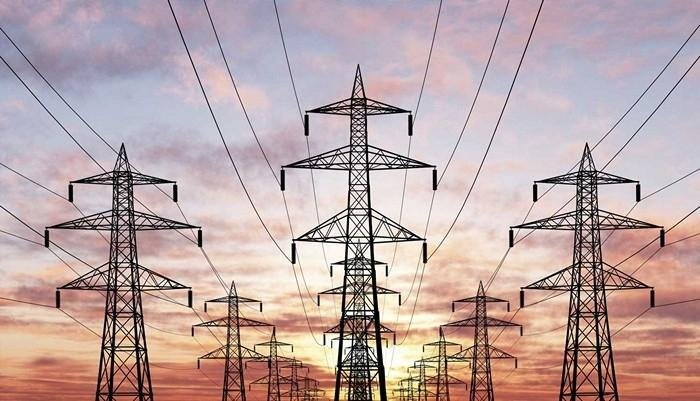Pakistan’s challenges of expensive and inadequate power supplies became quite apparent in the mid-1980s and by early 1990’s, there remained no doubt that the status quo was no longer sustainable for the people and the national economy.
To deal with the situation, the Council of Common Interests (CCI) – the forum bringing together leadership of the federation and federating units – approved a strategic plan in 1993 to unbundle the then Water & Power Development Authority (Wapda)’s water and power wings.
The plan required Wapda to retain the then Water Wing while the Power Wing was to be restructured into independent corporate entities concerned with power generation, distribution, and transmission. This followed some privatizations and opening up of the power-gen industry to the private sector.
Almost three decades of so-called reforms, restructuring, unbundling, corporatization, and tariff increases, Pakistan’s power supply remains among the most expensive in the world and a major drain on public finance that is a drag on the national economy as it renders industry uncompetitive.
The lending agencies – the World Bank and the Asian Development Bank in particular – kept on selling their large loan portfolios to the sector and became part of the problem with successive governments throughout this period. In the words of the World Bank itself, Pakistan has continued to suffer from inadequate capacity and other constraints, leading to large and frequent blackouts.
At the heart of the impasse is the so-called “circular debt” crisis, whereby distribution utilities struggling to collect revenues and meet regulatory targets for transmission and distribution losses default on their payments to generators, and the sector is periodically bailed out by the government at high cost to the exchequer as losses accumulate to intolerable levels.
This dynamic weakens the incentive for the DISCOS to improve their efficiency, while discouraging generators from investing in new capacity to address supply shortages. In the meantime, little has been done to accelerate access to electricity to the significant share of the unserved population in rural areas, the World Bank has noted.
The National Electric Power Regulatory Authority (Nepra) has also confirmed that even in just the concluded fiscal year 2020-21, the country’s electricity system was marred by underutilization of the most efficient RLNG-fired power plants, increase in circular debt, poor governance, and fuel supply challenges, putting unnecessary burden on consumers.
The growing power sector circular debt is worrying not only for the power sector but also for the whole economy. As of 30 June 2021 circular debt stood at PKR 2.280 trillion as compared to PKR 2.150 trillion a year ago despite hefty payments made to independent power producers.
This increase in the circular debt is detrimental to the financial viability of the power sector. High transmission and distribution losses of DISCOS, lower recovery of the billed amount, and non-payment of subsidies in time are the major causes of circular debt accumulation.
According to the regulator, the biggest challenge currently facing the power sector of Pakistan is the high cost of electricity for which there is no single reason. The unutilized ‘Take or Pay’ power generation capacity, impact of ‘Must Run’ power plants, old inefficient power plants, increasing capacity payments, whopping circular debt, weak transmission and distribution system, lack of coordination among relevant power sector stakeholders, improper planning, poor governance, use of primitive technology, taxes, fees and levies in electricity bills etc. are amongst the factors making the price of electricity unaffordable for consumers.
Underutilization of efficient plants is one of the major causes of increase in consumer-end price of electricity. Operating these plants on part load is reducing their efficiency and increasing their Energy Purchase Price (EPP) on the one hand while on the other hand, unutilized capacity is increasing their per unit capacity payment.
Besides under-utilisation of efficient plants, millions of pending new electricity connections, load-shedding despite availability of electric power generation capacity, non-availability of fuel, weak transmission and distribution system as well as poor governance are some major contributing factors for lower utilization of efficient power plants.
During the FY 2020-21, power sector also witnessed the challenge of fuel supply. During the period, the System Operator (SO) reported that it had been conveying its demand for RLNG to concerned quarters well before time but still it could not get the required volume of RLNG and resultantly, on occasions, various RLNG power plants were either unutilized or under-utilized.
RLNG is an imported fuel and its supply is controllable through proper planning and scheduling coupled with an efficient supply chain. Therefore, efforts should be made to improve the supply chain of RLNG so that non-utilization or under-utilization of efficient RLNG power plants can be avoided.
In case of RLNG, the firm Gas Supply Agreements need to be signed between the parties with back to back agreements so that burden of non-supply of gas could not be passed on to the electricity consumers.
The generation system also continued to bear the brunt of capacity payment for unutilized ‘Take or Pay’ power generation capacity. The combined installed capacity of intermittent nature electric power generation plants and conventional base load thermal power plants, including Nuclear Power Plants remained around 12,062MW and 27,711MW respectively as of 30 June 2021.
The utilization factor of intermittent nature power plant and base load thermal power plants remained around 41 percent and 45 percent of their respective combined dependable capacities.
The intermittent nature power plants enjoy the priority dispatch condition and in case of non-evacuation of available power from these plants, they are entitled for payment on account of Non-Project Missed Volume (NPMV).
Further, due to ‘Take or Pay’ contracts, the power plants, despite their low utilization factor qualify for capacity payments against their full available capacity. The capacity payments to the power generation companies, as verified by CPPA-G, during FY 2020-21 stood at PKR 613.9bn as compared to PKR 611.56bn during FY 2019-20.
The regulator has highlighted that the reduction in consumer price through measures like industrial support package (ISP) and cheaper winter tariff may stimulate economic activity and encourage consumption in the short run. However, for sustainable economic growth, there is a need to curb the inefficiencies in the power sector with proper planning and timely execution of the approved plans so that the cost of electricity for end-consumers can be reduced without burdening the exchequer.
NEPRA has advised the government to immediately undertake an array of measures to arrest the pace of accumulation of circular debt. The measures spelled out include optimal utilisation of efficient electric power generation plants, converting the tariff from ‘Take or Pay’ to ‘Take and Pay’ wherever possible, retiring the old GENCOs plants with very low efficiency and utilization and the IPPs having completed term of their licences, improving governance of DISCOS to curb T&D losses, and timely payment of subsidies.










